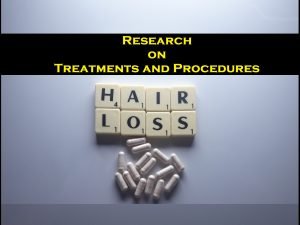Autism Symptoms Reversal: A Groundbreaking Twin Case Study
4 min read
Autism Symptoms Reversal: A Case Study of Level 3 ASD Diagnosis
For decades, an autism spectrum disorder (ASD) diagnosis has been largely considered a lifelong condition. However, a powerful new case report published in the Journal of Personalized Medicine challenges this notion, documenting the dramatic recovery of dizygotic (fraternal) twin girls from a Level 3 ASD diagnosis—the most severe classification, “requiring very substantial support.”
The study, “Reversal of Autism Symptoms among Dizygotic Twins through a Personalized Lifestyle and Environmental Modification Approach,” details a parent-driven, multidisciplinary strategy that moved beyond conventional therapies to address root causes. This offers new hope and a potential roadmap for families seeking interventions.
The Case of Twins “L” and “P”
The twins were born prematurely via gestational surrogacy in early 2020. By 20 months of age, both received a Level 3 ASD diagnosis at Walter Reed National Military Medical Center.
- Twin L showed no language, limited eye contact, sensory-seeking behaviors, and retained primitive reflexes like the Moro (startle) reflex.
- Twin P exhibited repetitive behaviors, severe anxiety, rigidity around transitions, and was described as socially aloof.
Both twins also suffered from significant gastrointestinal issues, including chronic constipation and diarrhea.
The Personalized Intervention: Addressing the “Total Load”
The parents, guided by an autism coach and a team of practitioners, embraced the “total allostatic load” model. This theory suggests that chronic illness arises from the cumulative burden of genetic, environmental, and lifestyle stressors that overwhelm the body’s ability to cope.
Their intervention was comprehensive and personalized based on extensive lab testing:
- Dietary Overhaul: The twins were placed on a strict gluten-free, casein-free, low-sugar diet with no artificial additives. They followed a “Reduced Excitatory Inflammatory Diet,” low in glutamate. All food was organic, unprocessed, and home-cooked.
- Targeted Supplementation: Using genetic (buccal swab) and metabolic (urine organic acids) testing, providers prescribed:
- Omega-3 fatty acids
- Methylated folate and B12
- Vitamin D
- Carnitine
- supplements to support glutathione production and detoxification.
- Environmental Remediation: A Building Biology consultant assessed their home for mold, moisture, and air quality. The family improved ventilation and addressed potential toxicant sources.
- Specialized Therapies: Beyond standard ABA and speech therapy, the twins received:
- Neuro-sensory motor reflex integration to address retained primitive reflexes.
- Cranial osteopathy (for one twin) to improve structural function.
- Support from a developmental optometrist for ocular motor dysfunction.
The Remarkable Outcomes
Progress was measured using the Autism Treatment Evaluation Checklist (ATEC), where a lower score indicates improvement.
The results were dramatic:
- Twin L’s ATEC score plummeted from 76 to 32.
- Twin P’s ATEC score saw a near-complete reversal, dropping from 43 to 4.
These scores have remained stable for over six months. Clinicians noted significant improvements in eye contact, language, social engagement, and behavioral regulation. One pediatrician described Twin P’s recovery as “a kind of miracle.” Follow-up evaluations at Children’s National Hospital showed vastly improved social and communication skills for both girls.
Key Takeaways and Implications
This case study is revolutionary for several reasons:
- Challenges Fatalism: It provides concrete evidence that ASD symptoms can be reversed, even in severe cases.
- Highlights Root Causes: It underscores the role of environmental and lifestyle factors—including gut health, toxicant exposure, and nutrition—as key modifiable pieces of the autism puzzle.
- Advocates for Personalization: There is no single “magic bullet.” Effective intervention requires a personalized, multi-system approach based on individual testing.
- Empowers Parents: The study highlights the critical role of motivated, well-supported parents as leaders in their children’s care teams.
The authors acknowledge limitations, including the high cost and complexity of such an approach, which may not be accessible to all families. They call for more prospective studies to validate these findings.
Conclusion: A New Paradigm of Hope
This case report adds to a growing body of evidence that a personalized, functional medicine approach focused on reducing the body’s total stress load can catalyze profound healing in children with ASD. It shifts the question from “How do we manage autism?” to “How can we promote recovery?”
Note: If this research resonates with you, it is essential to consult with a qualified healthcare provider or functional medicine practitioner to explore a personalized and safe approach for your loved one.
Source: D’Adamo CR, Nelson JL, Miller SN, Rickert Hong M, Lambert E, Tallman Ruhm H. Reversal of Autism Symptoms among Dizygotic Twins through a Personalized Lifestyle and Environmental Modification Approach: A Case Report and Review of the Literature. J Pers Med. 2024 Jun 15;14(6):641. doi: 10.3390/jpm14060641. PMID: 38929862; PMCID: PMC11205016. URL






